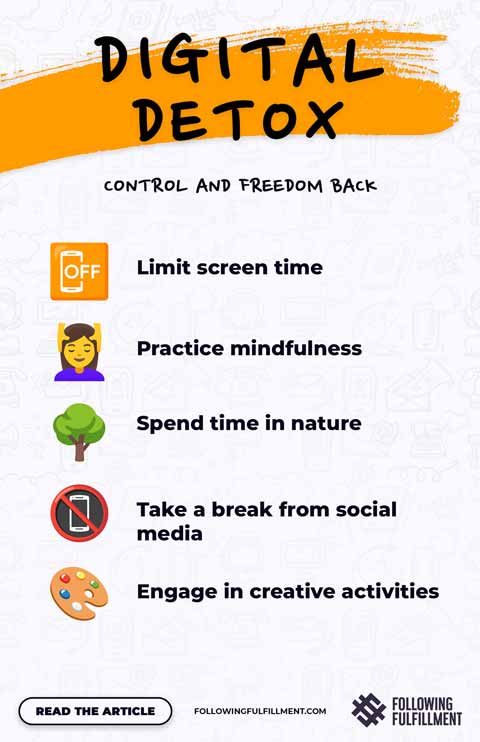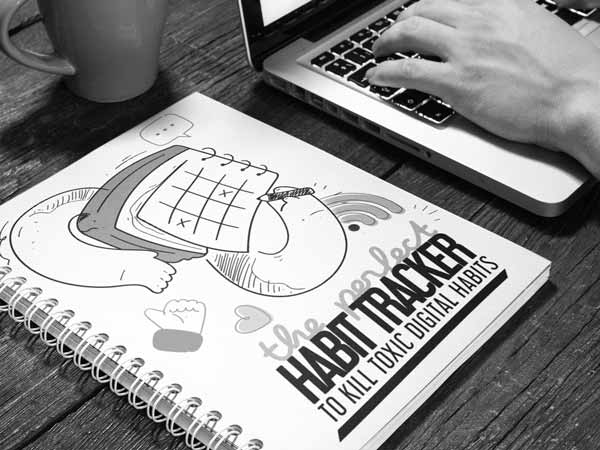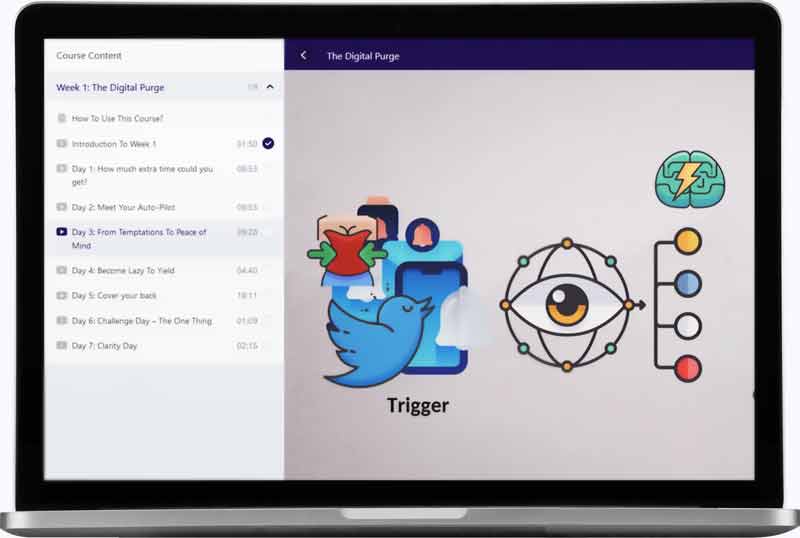- The Importance of Digital Detox: Reclaiming Control and Finding Balance
- What is Digital Detox and Why Does it Matter?
- Unplugging for a Better Life: Benefits of Digital Detox
- How to Do a Digital Detox: Practical Tips and Strategies
- Overcoming Challenges: Digital Detox Withdrawal Symptoms
- Digital Detox Retreats: Escaping the Digital Bubble
- Conclusion: Your Digital Detox Journey Starts Today

The Importance of Digital Detox: Reclaiming Control and Finding Balance

In today’s fast-paced digital world, it’s easy to become overwhelmed and lost in a sea of notifications, texts, and emails. The constant barrage of information can leave us feeling drained and disconnected from the world around us. That’s why digital detoxing has become increasingly important in recent years. By taking control of our technology use, we can reclaim our time, energy, and focus, and find a sense of balance in our lives. In this subpart, we’ll explore why digital detox is so crucial and how it can help you regain control and freedom in your daily life.
What is Digital Detox and Why Does it Matter?

In a world where we are constantly connected to technology, it’s easy to lose sight of the importance of taking a break. Digital detox is a process of disconnecting from technology and the online world to improve mental and physical health. In this article, we’ll explore what digital detox is and why it matters for our well-being.
Understanding the Need to Disconnect
In today’s digital age, we are constantly connected to our devices and the internet. While this has its benefits, it can also lead to excessive screen time, which can have negative effects on our mental health. Digital detox is becoming increasingly popular as people recognize the need to disconnect from technology and focus on self-care. By disconnecting, we can reduce stress and anxiety, improve our sleep quality and productivity, and strengthen our relationships with others. It is important to set boundaries and limit our screen time, whether it be by turning off notifications, scheduling regular breaks, or even taking a full technology-free day. By doing so, we can prioritize our mental and physical health and improve our overall well-being.
Exploring the Effects of Excessive Digital Use
Excessive digital use can have negative effects on our mental and physical health. It can lead to increased stress, anxiety, and depression. It can also cause problems with sleep, eyesight, posture, and weight gain. In addition, excessive use of social media can lead to feelings of isolation, FOMO (fear of missing out), and a distorted sense of reality. It is important to be aware of these potential negative effects and take steps to reduce our digital consumption, such as setting boundaries on screen time, taking breaks, and engaging in offline activities. A digital detox can also be helpful in resetting our relationship with technology and improving our overall well-being.
Unplugging for a Better Life: Benefits of Digital Detox


Digital Habit Tracker
Helps to reveal patterns and emotional needs behind your digital toxic habits.
FREE DOWNLOADIn today’s fast-paced world, it’s easy to become addicted to technology and lose touch with the real world. However, unplugging from technology can have numerous benefits for our mental, physical, and emotional well-being. In this subpart, we will explore the advantages of taking a digital detox and regaining control and freedom in our lives.
Improved Physical and Mental Well-being
Digital detox can improve physical and mental well-being in various ways. Reduced screen time can help to alleviate eye strain, headaches, and neck pain. It can also improve sleep quality as the blue light emitted from screens can disrupt our natural sleep patterns. Additionally, taking a break from social media and other digital distractions can reduce stress levels and improve overall mental health. It provides an opportunity to engage in other activities such as exercise, reading, and spending time with loved ones, which can have a positive impact on mental and physical health. Digital detox can also increase productivity and creativity by reducing distractions and allowing for more focused and intentional work. Overall, taking a break from technology can have significant benefits for both physical and mental well-being.
Enhanced Productivity and Focus
Digital detox can significantly improve productivity and focus. By reducing distractions from notifications, social media, and other digital media, individuals can concentrate more on their tasks and accomplish them more efficiently. Without the constant interruption of technology, individuals are also more likely to enter a state of flow, where they become completely absorbed in their work and achieve higher levels of productivity. Additionally, taking breaks from technology can improve cognitive function and creativity, which can lead to fresh ideas and innovative solutions. A digital detox can also help individuals prioritize their tasks and manage their time more effectively, leading to a more organized and productive day. Overall, incorporating regular digital detoxes into one’s routine can result in a significant boost in productivity and focus.
Strengthened Relationships and Social Connections
Digital detox can help in strengthening relationships and social connections. By disconnecting from digital devices and social media, people can focus more on face-to-face interactions and meaningful conversations with friends and family. This can lead to deeper connections and stronger relationships. Additionally, taking a break from social media can help people avoid the negative effects of comparison and envy that can arise from constantly scrolling through curated feeds. Instead, people can focus on building genuine connections and fostering a sense of community with those around them. Overall, digital detox can provide an opportunity for people to prioritize personal relationships and social connections in their lives.
How to Do a Digital Detox: Practical Tips and Strategies

In today’s digital age, it’s easy to feel overwhelmed and consumed by technology. A digital detox can help you take control and regain your freedom. But where do you start? In this guide, we’ll provide practical tips and strategies to help you successfully disconnect and recharge.
Setting Clear Goals and Boundaries
When embarking on a digital detox, it is important to set clear goals and boundaries for yourself. This means identifying what you want to achieve and what you are willing to give up in order to do so. For example, you may decide to limit your screen time to a certain number of hours per day or week, or you may choose to avoid using social media altogether. Whatever your goals and boundaries may be, it is important to communicate them to the people around you, whether it be your family, friends, or coworkers. This will help to ensure that you are able to stick to your plan and avoid temptation. Additionally, it can be helpful to track your progress and reassess your goals and boundaries periodically to ensure that they are still realistic and relevant.
Managing Screen Time and Device Usage
To successfully complete a digital detox, it’s important to manage screen time and device usage. This can mean setting limits on how much time you spend on your devices each day, and creating designated tech-free times and spaces in your daily routine. Some tips for managing screen time include turning off notifications, putting your phone on airplane mode during certain times of the day, and avoiding using devices before bed. You can also try using apps and tools that help you monitor and manage your screen time, such as Screen Time on iOS devices or RescueTime on computers. By being mindful of your device usage and setting boundaries, you can reduce your dependence on technology and improve your overall well-being.
Engaging in Offline Activities
One of the most effective ways to achieve digital detox is to engage in offline activities. These activities can help you break away from the constant use of technology and allow you to enjoy real-life experiences. Some offline activities that you can consider are reading books, gardening, hiking, cooking, painting, practicing yoga, or any other hobbies that you enjoy. These activities not only help you to disconnect from technology but also provide numerous benefits such as stress relief, improved mental health, and increased creativity. To make the most out of your digital detox, try to set aside a specific time each day or week to engage in these offline activities. This will help you to establish a routine and make it easier to stick to your digital detox plan.
Overcoming Challenges: Digital Detox Withdrawal Symptoms

Overcoming challenges is an integral part of any digital detox journey. As we try to cut down our screen time, we may experience some withdrawal symptoms that can make us feel anxious, restless, and disconnected. However, with the right mindset and strategies, we can overcome these challenges and reclaim control and freedom over our lives. In this subpart, we’ll explore some common withdrawal symptoms and effective ways to manage them.
Understanding the Psychological Impact
Digital detox can have a significant psychological impact on individuals. It can help reduce anxiety, improve mood, and enhance overall well-being. Research has shown that excessive use of technology can lead to addiction, stress, and depression. By disconnecting from technology, individuals can break free from the constant pressure of being connected and increase their mindfulness and self-awareness. Digital detox can also improve interpersonal relationships by encouraging face-to-face communication and empathy. However, it’s important to note that digital detox can also lead to feelings of isolation and FOMO (fear of missing out) for some individuals. It’s crucial to strike a balance between staying connected and taking time to disconnect to avoid negative psychological impacts.
Coping Strategies for Dealing with Withdrawal
Withdrawal symptoms during a digital detox can be challenging to manage. However, there are several coping strategies that can help ease the process. These include:1. Engage in physical activities such as exercise or outdoor activities.2. Practice mindfulness techniques such as meditation or deep breathing exercises.3. Connect with friends or family members in person or through phone calls.4. Engage in hobbies or activities that do not involve the use of technology.5. Set achievable goals and reward yourself for reaching them.6. Keep a journal to reflect on your progress and emotions.By implementing these coping strategies, individuals can make the digital detox process more manageable and improve their overall well-being.
Digital Detox Retreats: Escaping the Digital Bubble

In today’s fast-paced world, it can be challenging to disconnect from our digital devices and enjoy some much-needed downtime. That’s where digital detox retreats come in. These retreats offer a chance to escape the digital bubble and reconnect with nature, yourself, and others without the distraction of technology. Join us as we explore the benefits of digital detox retreats and how they can help you regain control and freedom over your digital life.
Exploring Nature Retreats and Wellness Centers
Nature retreats and wellness centers are ideal places to disconnect from the digital world and reconnect with nature and oneself. These centers offer a variety of activities such as hiking, yoga, meditation, and spa treatments. They are usually located in peaceful and remote locations, away from the noise and distractions of cities. By spending time in nature, individuals can reduce stress, improve their mood, and boost their overall well-being. It is recommended to spend at least a few days in a nature retreat or wellness center to fully experience the benefits of digital detox. Some popular destinations for nature retreats and wellness centers include Bali, Costa Rica, and the Alps.
Engaging in Mindfulness and Meditation
One effective way to practice digital detox is by engaging in mindfulness and meditation. These practices require individuals to disconnect from technology and focus on the present moment. By doing so, individuals can reduce stress, increase focus, and improve their overall well-being. Mindfulness encourages individuals to be aware of their thoughts and feelings without judgment, while meditation involves focusing on a specific object or breathing pattern to quiet the mind. Both practices are accessible through various apps and websites, making it easy to incorporate them into daily routines. By incorporating mindfulness and meditation into your digital detox, you can recharge your mental batteries and develop a healthier relationship with technology.
Learning Healthy Digital Habits
To achieve a successful digital detox, it is important to develop healthy digital habits. One of the key steps to take is to limit screen time. This can be achieved by setting specific times of the day when electronic devices are not allowed or by scheduling breaks every hour or two when using devices for work or leisure. Another important habit to develop is to prioritize offline activities such as exercise, reading, or spending time with loved ones. It is also essential to create a conducive environment for healthy digital habits by minimizing distractions such as notifications and pop-ups. Finally, setting goals and tracking progress can help to stay motivated and accountable in maintaining healthy digital habits.
Conclusion: Your Digital Detox Journey Starts Today
In conclusion, the benefits of a digital detox are numerous and undeniable. By taking control of your technology use, you can regain freedom, reduce stress, improve your mental health, and connect more meaningfully with the world around you. Whether you start with small steps or jump in with a full detox, your journey towards a healthier relationship with technology starts today. Remember, the power to unplug is in your hands.
